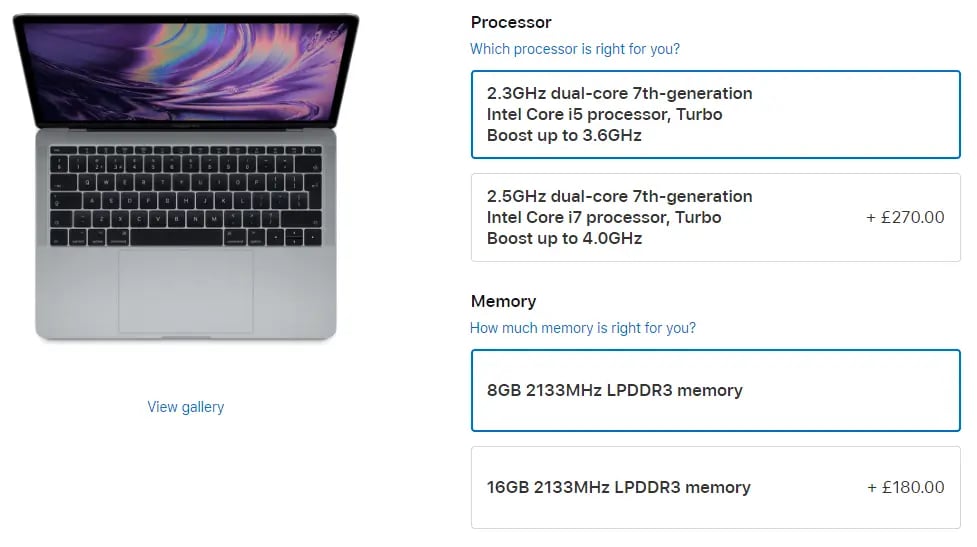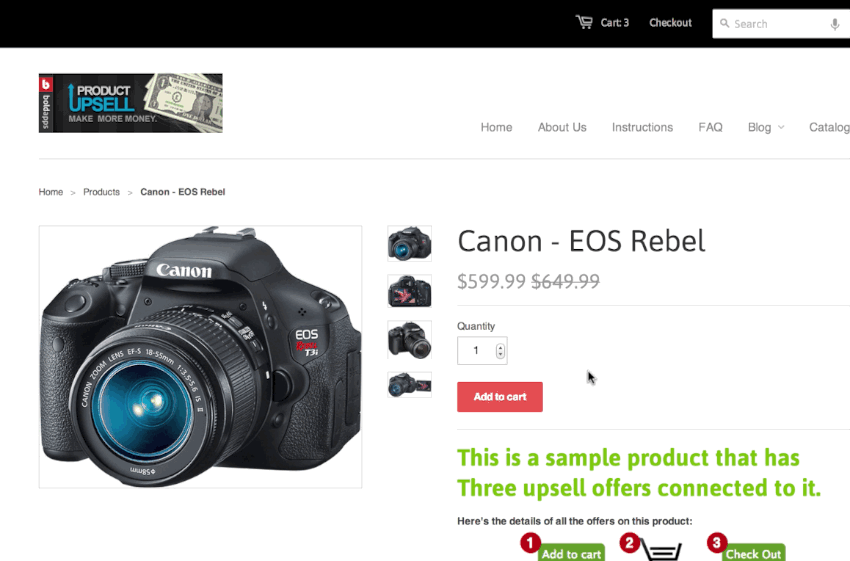Google Universal Commerce Protocol: The Impact on Your Visibility
What is Google's Universal Commerce Protocol (UCP) and how does it impact visibility in product searches using artificial intelligence?

Upselling and cross-selling have one main goal: to increase sales. If you want to learn about how to convince your customers to add additional products to their shopping carts, keep reading!
If you’ve never heard of upselling and cross-selling by name before, you’ve definitely seen them in action. One classic version happens at fast food chains every day – “Would you like fries with that?”... Gets me every time!
This selling technique is known as cross-selling. We'll get into the definitions of each one shortly.
Another common cross-selling technique is common at supermarkets around the globe – those tempting candy bars found right at the cashier as you’re queueing up.
Studies have shown that approximately 10-30% of e-commerce sales can be directly attributed to these additional product proposals. Clearly, upselling and cross-selling can be valuable strategies for almost any online shop. Before we learn how to use these tactics, let’s make sure we know the difference between upselling and cross-selling.
Upselling is a tactic whereby you try to convince the customer to buy the more expensive (better, newer, etc.) version of the product they are already interested in. Alternatively, it could mean upgrades for the product if possible, such as more RAM for a new laptop.

Upsell example via Apple
Many airlines offer the option of more legroom when buying a plane ticket. JetBlue, the American airline, made about $190 million in additional revenue in 2014 with its “Even More Space” option. Many customers are willing to spend more money on a better or additional product if they know it will bring them a true benefit.
Conversely, if you don’t offer your customers upgradable options, then you’ll be missing out on the chance to make additional revenue. However, it’s also important to keep in mind that the upsell should be relevant to what the customer has already searched for.
If a customer places an inexpensive £400 TV in their shopping cart, it definitely makes sense to offer them a TV that is slightly bigger/more modern and costs £80 more. However, offering the a 4k-curved TV for £1500 would be an inappropriate upsell attempt as this is a huge jump in pricing. The chances that they choose this option are slim to none.
As a rule of thumb, you can try to upsell products that are up to 30% more expensive than the originally selected item.
Cross-selling is a sales technique in which you offer the customer an additional complementary product to the item they’ve selected.
A classic example of cross-selling is if a customer places a new digital camera into their shopping cart, you could offer them extra batteries during the checkout process.

Source: Boldcommerce
Other examples include:
If a TV is added to the shopping cart, an HDMI cable is suggested
If a customer buys flower pots, they might be interested in potting soil
If you sell coffee machines, you might suggest coffee beans to your customers
Amazon has reported that as much as 35% of its revenue comes from cross-selling. The industry standard is about 10%.
Adding a section for “these items are often bought together” or “customers who are interested in this product also bought” won’t just help you increase sales, but can really be helpful for your shoppers, too.
In order for cross-selling to really work, you’ll have to think about which products fit together well (like tea and biscuits).
Though both can bring you increased revenue, cross-selling can be a bit easier as there is almost always a complementary product for whatever is purchased. Not every product has a suitable upsell opportunity.
Because of this, you should try to upsell your most popular products (the ones with a lot of product reviews). These are the products with the greatest potential for upselling.
Cross-selling and upselling also work best with existing customers. According to a study by Marketing Metrics, the chances of selling something to an existing customer is around 60-70%. In contrast, the probability of convincing new customers to buy your goods is 5-20%.
Likewise, cross-selling and upselling help to increase conversion rates, sell more products, boost visibility for more of your products, and generally leads to happier customers.
There are basically three ways for you to display cross-selling and upselling offers:
1. Before the purchase: You can present more products from the same category at the bottom or the side of your product page.
2. During the purchase: By offering a complementary product during the check-out process (in the shopping cart or during/shortly before the payment process), you can increases sales by up to 3%.
3. After the purchase: Even after the purchase, you can generate follow-up emails with new cross-selling opportunities.
Example: A customer buys a new computer, but hasn’t gotten a new printer yet. Seize this opportunity to both help your customers and increase sales.

Shutterstock/Di Studio
1. Show a selection of items, but don’t overdo it. Giving your shoppers too many choices can be a bit overwhelming. It’s better to display a small number of highly relevant products.
2. Show off appropriate products. Trying to upsell a £1500 DSLR camera to someone who has shown interest in £200 digital camera simply won’t work. You’re better off trying to cross-sell a camera bag, memory cards, or spare batteries.
3. Tempt your shoppers with juicy discounts. This works especially well when bundling some products together. For example, if they intend to buy a digital camera, offer them a good price on a memory card, camera bag, and a spare battery. This makes sense for both you and the customer, as they very well may have intended to buy these products anyway. If they were on the fence about buying everything at once, your discount might convince them to pull the trigger right then and there.
4. Although price is always an important factor in the purchase decision, the idea that “customers won’t pay for a more expensive product” is a myth. Other decisive factors include special offers, vouchers, shipping costs, as well as shop and product reviews. That means that a customer would be willing to pay more for a product that they know has better ratings and meets their needs more.
5. Convince customers why this upsell or cross-sale makes sense for them. This can either be an emotional reason (“With this additional battery, make sure you never miss a special moment”) or a logical reason (“By adding this product to your cart, shipping on your entire order will be free”). By combining emotional and logical reasons for the purchase, you’ll increase the chances of converting this extra sale.
Implementing these tactics in your shop can definitely be quite profitable for you. By finding the right products in the right price range, and offering them at the right time, you can increase sales for your online shop.
31/08/21
What is Google's Universal Commerce Protocol (UCP) and how does it impact visibility in product searches using artificial intelligence?
Learn how Trusted Shops enhances your online shop's AI visibility through trust-building elements such as customer reviews and the Trustmark.